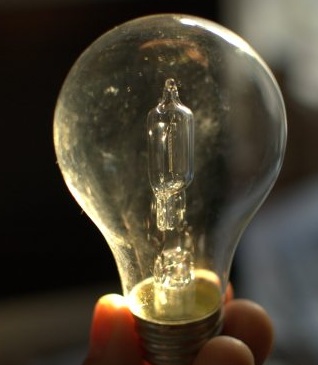Why is There Opposition to Better Lightbulbs?
 You don't buy electricity for the sake of having electricity. You buy it for the services that electricity provides – hot showers, cold drinks, bright lights, and a home that shelters you from the swampy heat outside.
You don't buy electricity for the sake of having electricity. You buy it for the services that electricity provides – hot showers, cold drinks, bright lights, and a home that shelters you from the swampy heat outside.
If you can obtain the same level of energy services with new technology that consumes less electricity than old technology, that's a cause for cheer, not heartburn.
Not for everyone, however, as the trope about a non-existent "bulb ban" (see my colleague Dave Jenkins' post of July 11) hangs on for those in a tizzy that 100-watt incandescent bulbs will be superseded by more efficient 72-watt incandescent bulbs that look the same and yield the same amount of light.
Following Tuesday's defeat of a foolish bill that would repeal lighting efficiency standards that were enacted with broad, bipartisan support in 2007, the House on Friday passed by voice vote an appropriations amendment cutting off funds to enforce the standards. The amendment faces a doubtful fate in the Senate.
Some of the more excitable voices among the talk radio crowd are urging consumers to stock up on 100-watt incandescents before the 2007 law takes effect next year.
Before you fill the garage with cases of 100-watt light bulbs and hunker down for the lighting apocalypse, try out one of those 72-watt incandescent light bulbs. They're on home improvement store shelves today. You don't have to buy curly-fries compact fluorescents or super long-lived LEDs if they don't suit you. Not now, not next year.
You don’t need an economics degree or a scientific calculator to understand the cost advantages of the new, more efficient incandescents that lighting manufacturers have designed and manufactured, in spite of loose rhetoric that it couldn't be done.
Buy a 100-watt bulb for 69 cents and run it for 750 hours. At 10 cents a kilowatt-hour, that bulb will cost you $7.50 to operate. Total cost: $8.19.
Buy a 72-watt bulb – fully compliant with the 2007 law – for $1.50 and run it for 750 hours. At 10 cents a kilowatt-hour, that bulb will cost you $5.40 to operate. Total cost: $6.90.
Same light, lower cost.
Sure, the up-front cost of the new incandescent is a little higher, but it's hard to argue with a straight face that it's an insurmountable barrier.
Lighting technology continues to evolve. Philips Lighting, for example, expects the price of LED lights to plunge over the next decade, expanding the market for bulbs that will stay lit over, say, five or more election cycles.
By which time, we can only hope, that congressmen will find other reasons to make a mountain out of a molehill.

